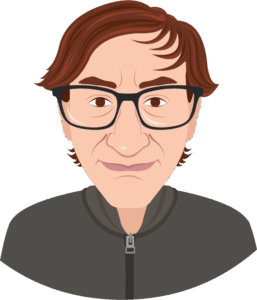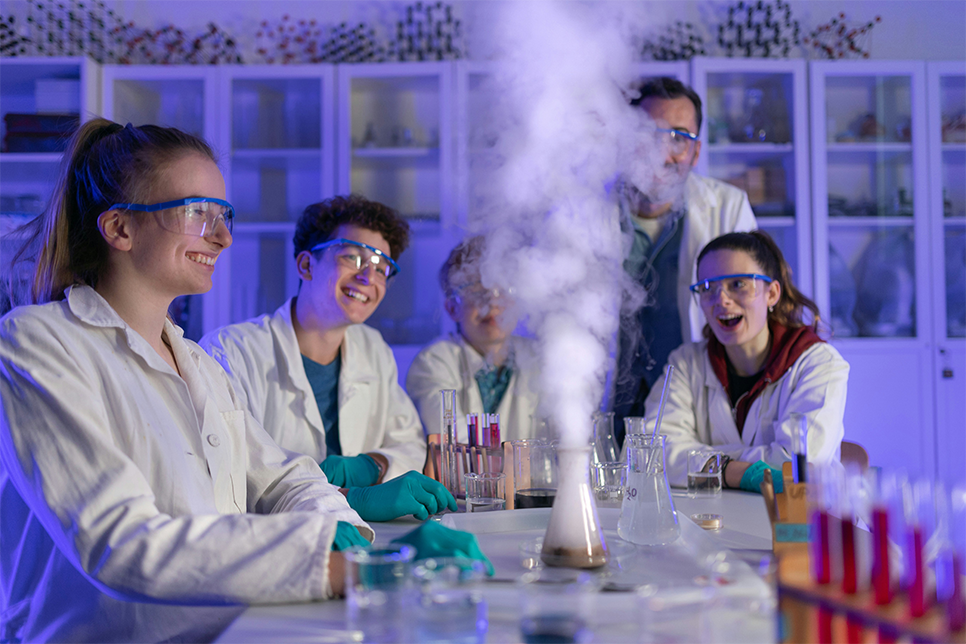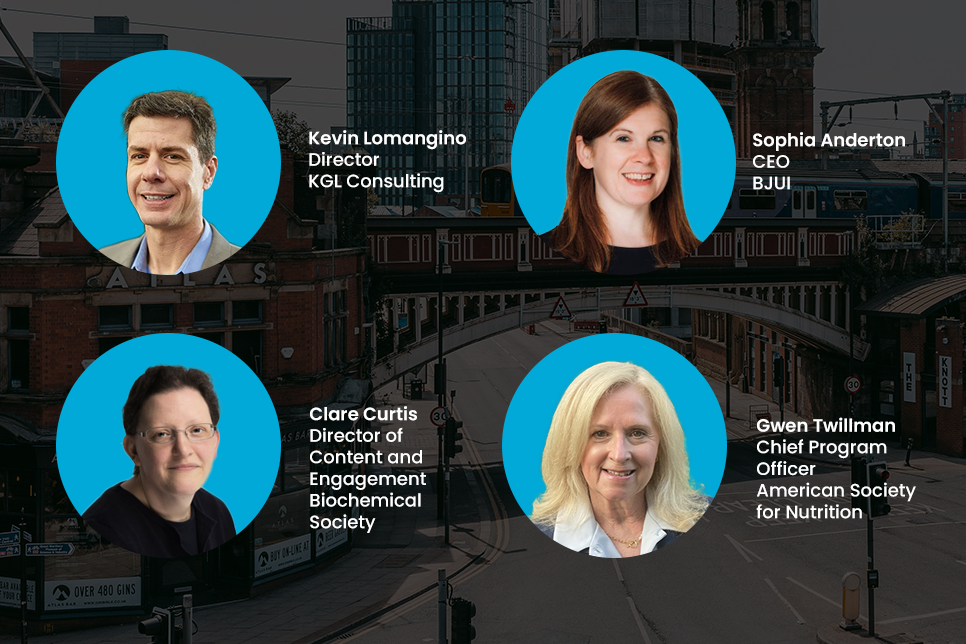
Keep Your Science Sharp This Summer with KGL Summer School
Science education is full of fascinating ideas—but sometimes even the most well-intentioned lessons can introduce (or reinforce) long-standing misconceptions. In this special KGL Summer School post, we spotlight five classic classroom confusions that often make their way into textbooks, worksheets, and teaching examples.
Even the best scientists can be wrong. Joseph Priestly described oxygen as "dephlogisticated air," [1] and Einstein initially rejected plate tectonics[2]. Science is constantly evolving, and so is our understanding of it—which means misconceptions can take hold anywhere: in classrooms, textbooks, and even our own thinking.
If you currently believe in any of the statements listed below, I urge you to temper any harsh judgment against yourself, me, or the world at large. Instead, check out my reference sources, come to your own conclusions about the issue, and then move on. Science is all about building knowledge of nature and useful models that explain it. Mistakes and setbacks are just part of the adventure.
1. Tongue rolling is inherited as a classic Mendelian trait.
Way back in 1940, biologist Alfred Sturtevant described the ability to roll the tongue as a classic Mendelian trait, meaning it was inherited as a gene with dominant and recessive alleles. Soon after publication, however, Sturtevant discovered a few holes in his evidence. Some non-rollers of the tongue were able to learn the trait with practice. Other subjects could roll their tongues only partially, not completely. After a few years, Sturtevant and other scientists concluded that tongue rolling is a more complicated phenomenon than any simple genetic model could explain. [3]
For whatever reasons, writers of science textbooks learned about the initial report of tongue rolling, but not the follow-ups. Tongue rolling provided a fun example of genetic inheritance, and it fit neatly into lessons on Gregor Mendel and his work. Tongue rolling had the added benefit of being a human trait that students could easily study—no tedious raising of pea plants required.
You can still find science lessons and activities on genetics that include tongue rolling. Alas, the example is a myth.
2. Physical changes are reversible; chemical changes are irreversible.
This comparison comes from introductions to chemistry, and it is partially true. Many physical changes are simple to reverse. Freeze liquid water into ice, and you can heat the ice to undo the freezing. If someone mixed iron filings into your breakfast cereal, then with the help of a magnet, you could separate them out. In contrast, many chemical changes are permanent, such as the combustion of wood and other fuels. [4] [5]
But do all physical and chemical changes fit this pattern? No, they do not. For example, tear a sheet of paper into a hundred tiny pieces, which is a physical change because the paper remains paper. Or sharpen a pencil, or crack an eggshell, or shatter a drinking glass. If you are able to reverse any of these changes and restore the original object, then you've got a magic act.
Reversible chemical reactions not only exist, they get their own symbol in chemical equations. An example of a reversible reaction is nitrogen dioxide (NO2) doubling up to become dinitrogen tetroxide (N2O4). The product will split apart and restore the original reactant. Organic chemistry provides a boatload of other examples.
For a simple demonstration of reversing a chemical change, how about litmus paper? Red litmus turns blue when it reacts with a base, and then turns back to red when it reacts with an acid. You can repeat the acid-base conversions all day long, and the litmus won't complain.
3. The little v is for velocity.
If you teach physical science, then you know the difference between velocity, which is a vector quantity, and speed, which is the magnitude of the vector. If the velocity of your flight to Minneapolis is 520 miles per hour due west, then your speed is 520 miles per hour, without the direction. [6]
But before you think you have mastered the distinction, consider the expression \(\fracmv^2\), which quantifies kinetic energy. Do you translate it as "one half times the mass times the velocity squared." I've certainly said this. And it's incorrect. The little v stands for speed, not velocity. Mass and speed alone, not the direction of motion, determine the kinetic energy of an object.
Why the confusing choice of variable? Why not \(\fracms^2\)? The reason is that by convention, the same letter is used to represent vector quantities and their magnitudes, which for velocity is letter v. The vector quantity is printed in bold type, or with a little arrow above it, or both. The magnitude is just the letter.
The good news is that this nuisance is confined to language only. Even if you are a little off in your translation of little v, you probably understand its meaning. If only the next misconception were so simple….
4. A cloud of steam is an example of a gas.
In my humble opinion as an editor, steam takes the prize for the most frustrating word in all of science education. That's despite—or perhaps because of—its five-letter length and familiarity to kindergarteners. Steam steams me, if you like. [7]
Consult your favorite dictionary, and you'll find that steam as a noun has two definitions:
- the invisible vapor formed by boiling water
- the mist formed by the condensation of water vapor
Meaning, the word steam could legitimately identify water in the gas state, which is invisible, or to tiny droplets of liquid water, which can be seen. For a lesson on states of matter, the contradictory definitions provide an amazing opportunity for confusion.
A children's science book may state, with back-up from the dictionary, that steam is a gas made of water vapor. An accompanying photo shows steam rising from a tea kettle or a smokestack. Readers might then conclude that the steam they see—which is the cloud or mist that forms from condensation—is a visible example of water vapor. Which is completely wrong.
If you're a science writer and you want an example of a visible gas, please stay away from steam. I've got a new and exciting alternative, which is the flames from a fire. Flames are made of hot, glowing gases. A photo of either burning logs or birthday candles would make an engaging and accurate illustration of the gas state of matter. I have yet to see either of them used that way.
5. Everything is made of molecules.
I think people really like the word molecule. It's fun to drop into conversation: "I drank all the coffee, down to the last molecule." Alas, there's no such thing as a molecule of coffee. Molecules also do not make up metals, metal alloys, and salts. [8]
A molecule is a group of atoms that are bonded together and act as a unit. The smallest molecules have two or three atoms. Water (H2O) is an example of a three-atom molecule, as is carbon dioxide (CO2). Some biological molecules, such as DNA and proteins, are made of atoms in the millions or billions. Mixtures, like coffee, are made from two or more substances, which generally means two or more kinds of molecules. But not all substances are molecular.
Clarity Counts in the Classroom
Misconceptions can stick for years. At KnowledgeWorks Global Ltd., our K–12 content development experts collaborate with publishers and education providers to ensure clarity, accuracy, and engagement across digital and print learning materials. From instructional design to science editorial services, we bring precision to every page.
Let's build content that helps learners think—and rethink—the science they know.
Up next: Part 2 explores the pop culture myths that blur the line between science fiction and science fact.
Joseph has over 25 years of K–12 science and math product development experience. He edited high school science textbooks at Prentice Hall and served as Science Editor and later Editorial Director of Technology at Macmillan/McGraw Hill. At Scholastic, he developed math programs such as MATH 180. Joe oversees science development for KGL and can be reached at info@kwglobal.com.
References
[1] https://www.acs.org/education/whatischemistry/landmarks/josephpriestleyoxygen.html
[3] https://udel.edu/~mcdonald/mythtongueroll.html
[4] https://education.nationalgeographic.org/resource/changes-matter-physical-vs-chemical-changes/
[6] https://physics.info/velocity/
[7] https://www.merriam-webster.com/dictionary/steam
[8] https://www.aatbio.com/resources/faq-frequently-asked-questions/is-salt-a-molecule





